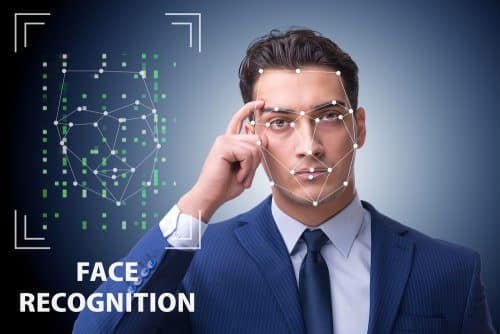For the first time, the neurons that respond to faces were found in visual areas of the human brain

In the new study, for the first time, neurons in human visual areas responsible for processing faces were identified. The neurons responded to images of familiar and unfamiliar people's faces, animal faces, and lick faces that appeared in a movie starring Charlie Chaplin. "Despite hundreds if not thousands of studies dealing with face processing, this is the first time that neurons that respond to faces have been found in visual areas in humans" - explained the researchers. "It is very possible that neurons of this type are critical for recognizing faces" - they added.
A new study published in Neurology, the prestigious medical journal of the American Academy of Neurology (in the issue of January 21, 2019), identifies for the first time the neurons in the visual cortex of the human brain that respond to faces. The study was conducted by Dr. Vadim Axelrod, Head of Laboratory at the Bar-Il Brain Research Centerand in collaboration with the staff of the Institute du Cerveau et de la Moelle Épinière and the Pitié-Salpêtrière Hospital headed by Prof. Lionel Nakash.
The researchers found that the neurons near the face area (Fusiform Face Area) responded differently and more to facial features than to landscapes or objects (see examples: https://youtu.be/QYJCB60FhHE). In the study, the team showed that the neurons responded to different types of faces, such as the faces of famous French people who were known to the subject who performed the experiment (for example, Nicolas Sarkozy, Catherine Deneuve, Louis de Pins) and also to the faces of famous Israeli people who were not known to the subject who performed the experiment (for example, Eric Einstein, Uzi Landau, Gila Almagor).
The research team explained the importance of the research and its contribution: "Imagine a world where everyone has the same facial features. It will be a completely different world from what we know. In our world, where our facial features are different, we take it for granted that faces give us vital information. For example, most of us can recognize a celebrity's face even if it appears for a few seconds or recognize the face of an old school friend even after decades of not seeing him. Many of us can also sense another person's mood just based on their facial expression.
Often, we can determine whether a person is trustworthy by his or her facial features. To this day, the issue of how the brain stores all this information remains a great mystery. Neurons have never been identified before in humans and in the initial research, there was a very rare opportunity to record neural activity within the visual cortex of the human brain and identify how the neurons generate facial features."
The importance of the research lies in the fact that in the early seventies of the last century Prof. Charles Gross and his colleagues discovered the neurons in the visual cortex of macaque monkeys that responded to faces. But in humans, this activity was examined mainly through non-invasive tools such as functional magnetic resonance imaging (fMRI and electrophysiology EEG)," explains the study's editor, Dr. Axelrod. "In humans, neurons have never been identified before in this area, so in our research, we had the rare opportunity to record neural activity using microelectrodes implanted in the Fusiform Area - the largest and most important area of the human brain."
The best-known neurons that respond to faces are the so-called "Jennifer Aniston cells" - the neurons in the medial temporal lobe and hippocampus) that respond to different images of a certain person (for example, Jennifer Aniston in the original study published in Nature by Quiroga and his colleagues in 2005). "But the neurons in the visual cortex that we reported on are very different from the neurons in the medial temporal lobe," emphasizes Dr. Axelrod. He clarifies that "the neurons in the visual cortex respond vigorously to any type of face, regardless of a person's identity, and also respond much earlier."
The present results provide unique insights into the functioning of the human brain at the cellular level during face processing. These findings also help to understand facial mechanisms between species (ie, between monkeys and humans). "It's really exciting", concluded Dr. Axelrod, "after almost half a century since the discovery of neurons in the face of a macaque monkey, it is now possible to find similar neurons in humans."
